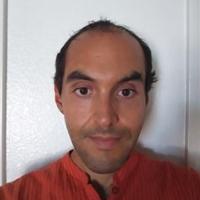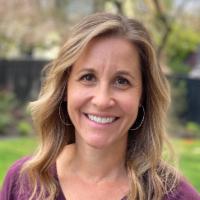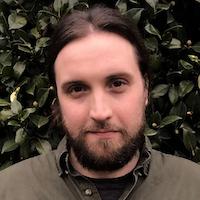From Brick-and-Mortar to Online Learning: The University Response to Covid-19
To go from completely in-person to completely online in less than two weeks—it was very, very abrupt.
Dr. Jarrod Hyam, University of Wisconsin-Eau Claire
Since pivoting to a predominantly online learning space, the number of obstacles to engaging college students has grown. Before the pandemic, going to school online was a route utilized mostly by non-traditional students. Distance learning allowed for greater flexibility if students had obligations to a job or family, as well as for those who could not easily attend a campus. But in late spring, that paradigm has flipped completely. The virtual classroom space is now our default.
On July 30th, The Chronicle of Higher Education published a new list of the schools that have chosen to reopen, including the plans that will govern that process. And earlier in the summer, most colleges and universities across the country had publicly announced they had gone mostly (or entirely) online for fall 2020.
This presents challenges for everyone because online systems were never meant to support the entirety of the student body. Pre-pandemic, the choice to take online undergraduate courses would have been influenced by a student’s job, family, personal history, region, socioeconomic status, health, or any one of a dozen other factors. However, as confirmed Covid-19 cases approach six million in the US, it’s the only choice available at most institutions. While online learning began as a means of creating new pathways to higher education, it’s likely to be the sole route for all groups in the indefinite future, from vocational students to post-doctoral fellows.
Keep reading to learn more about how universities, faculty, and students have weathered the sudden shift from in-person to online learning since March of this year.
Meet the Interviewees: Dr. Jarrod Hyam & Jennifer Yamin
 Jarrod Hyam, PhD, University of Wisconsin-Eau Claire
Jarrod Hyam, PhD, University of Wisconsin-Eau Claire
Dr. Jarrod Hyam is an associate lecturer of philosophy and religious studies at the University of Wisconsin-Eau Claire. An expert in the Indian subcontinent and anthropology of religion, he has taught at Carroll University and Oregon State University. He earned his PhD in Indian subcontinental studies from the University of Sydney, where he worked closely with renowned Indo-Tibetan Buddhism scholar Dr. Geoffrey Samuel.
Dr. Hyam’s research interests include comparative philosophy, ethnography, South Asian religions, and Buddhism studies. He earned an interdisciplinary MA in philosophy, religious studies, and English literature from Oregon State University and a BA in philosophy from UC San Diego.
 Jennifer Yamin, MFT Graduate Student, Lewis and Clark College
Jennifer Yamin, MFT Graduate Student, Lewis and Clark College
Jennifer Yamin is a marriage and family therapy (MFT) graduate student at Lewis and Clark College in Portland, Oregon. She holds an undergraduate degree in political science from California Polytechnic State University in San Luis Obispo. Before beginning her studies at Lewis and Clark, she worked in corporate social responsibility in San Francisco and New York City. She lives in Portland, Oregon with her family.
The Sudden Shift to Distance Learning
Dr. Jarrod Hyam works at the University of Wisconsin Eau-Claire—and like professional educators everywhere, he’s been working tirelessly to help his students adjust to the shift to online education.
As a longtime teacher of complex, sometimes intangible topics, Dr. Hyam is well-acquainted with variations in learning styles: “We’ve known for quite some time that not everyone is capable of learning well through an online platform. Now, due to the pandemic, it’s becoming more and more uniform in that we expect everyone to tune in and be able to learn this way. A lot of students—though I can’t really quantify it—have been very frustrated.”
He continues, “Some [students] became indifferent because the whole process just made them way too anxious. In fact, a few of my extremely bright, talented, and creative students had to drop completely. To go from completely in-person to completely online in less than two weeks—it was very, very abrupt,” he says.
He points out that while the forced adoption of distance-based learning has been challenging for many, the local internet provider has been helpful: “I live in a fairly small city, but a lot of students live in rural areas where internet coverage might not be reliable,” he elaborates, “So, the internet provider here just decided to start giving everyone free internet.”
The New Face of Higher Education
As it stands now, students who had never considered taking online courses have had it thrust upon them—not to mention how quickly professors and university administrators have had to adapt to this new reality. If the situation were typical, universities would be planning one or two academic years ahead, following initiatives and models already agreed upon.
“The Ivy Leagues, which you could consider the role models for most universities, were very responsive and acted fast,” Dr. Hyam mentions. “They’ve gone completely online as of now, and most schools have followed their lead, especially in larger cities.”
In Dr. Hyam’s case, the University of Wisconsin-Eau Claire was given authority to make Covid-19-related policy decisions by the lead institution in Madison. The school decided to take a hybrid approach: a combination of online and in-person learning.
Even with these accommodations, there are students and faculty members who refuse to come to campuses at all due to reasonable health concerns. With some US experts predicting a death toll of nearly 300,000 by December, it’s not hard to see why students and professors have raised the alarm.
“I think the administration is being very accommodating to everyone that’s worried about these potentialities. If anything drastic happens, then they obviously have to shut it down completely.”
The Challenges of the Quick Shift to Online Instruction
Dr. Hyam describes the process by which the university administration makes decisions related to health as “experimental.” A major component of any such experiment is the student body itself, many of whom feel they are completely without alternatives.
“They didn’t sign up to be online students,” Dr. Hyam points out. “They want to have that socialization aspect, as well as having that lesson content conveyed to them in a way that’s less abstract than online lessons.”
Dr. Hyam mentions some critical activities of learning, which are more difficult to host in an online-only environment, including extracurricular socialization, after-class discussion, and reserved office hours. There are many more, including clubs, campus events, and student-formed discussion groups.
For some students, Covid-19 has meant they’ve missed out on some important elements of higher education. And while Canvas- or Blackboard-based online resources have accompanied traditional in-person classes since at least the mid-2000s, getting in the groove of attending class online has a learning curve even in the smoothest of times.
“Right now, everyone is just trying to get through their day and minimize whatever’s making them stressed or anxious,” says Dr. Hyam.
Student Mental Health Under the Pandemic Lockdown
Independent journalists, therapists, counselors, experts, celebrities, activists, and others on social media have helped to foreground a more accepting public space for discussions about mental health during the pandemic. Jennifer Yamin, a marriage and family therapy student at Lewis & Clark whose classes are now all online, shares her experience.
“At first, I was really nervous about it,” Yamin confesses. “I was thinking, ‘How am I going to connect with clients?’ or ‘How is this going to go?’ But I can see telehealth really becoming possibly more widely accepted than in-person [services].”
Yamin says she finds the standard format of an in-person course to be both difficult and intimidating, but she admits that learning online presents its own unique challenges: “Trying to speak up is so awkward on Zoom. I had to give a presentation and in some ways, it was probably easier because you couldn’t see anyone, which is one of the things I was worried about.”
Yamin adds that overall, she applauded her school’s ability to turn to distance-based learning exclusively: “I’m really impressed with how Lewis & Clark was able to pivot online,” says Yamin.
She describes one of her recent professors, a striking example of how faculty members can help their students during the shift: “She knew Zoom so well. She knew how to do the Breakout sessions. She was all-business and stuck to the curriculum—and at first, us students were thinking it was going too fast. She gave us this sense of normalcy. There wasn’t a lot of time spent dwelling on ‘I can’t believe we have to do all this online’ or ‘I can’t believe this is happening.’ She just kind of embraced it in this way that worked really well.”
Along with Dr. Hyam, Yamin’s positive experience using communication technologies underscores the importance of adaptation in a world throttled by the novel coronavirus. With widespread closures imminent as the US braces for its ‘second wave,’ such ease of access for both education and therapy will be critical to the health of American citizens.
We must cultivate our capabilities to think, act, and solve problems on the fly to the best of our abilities. The pandemic tests us all in this respect.
